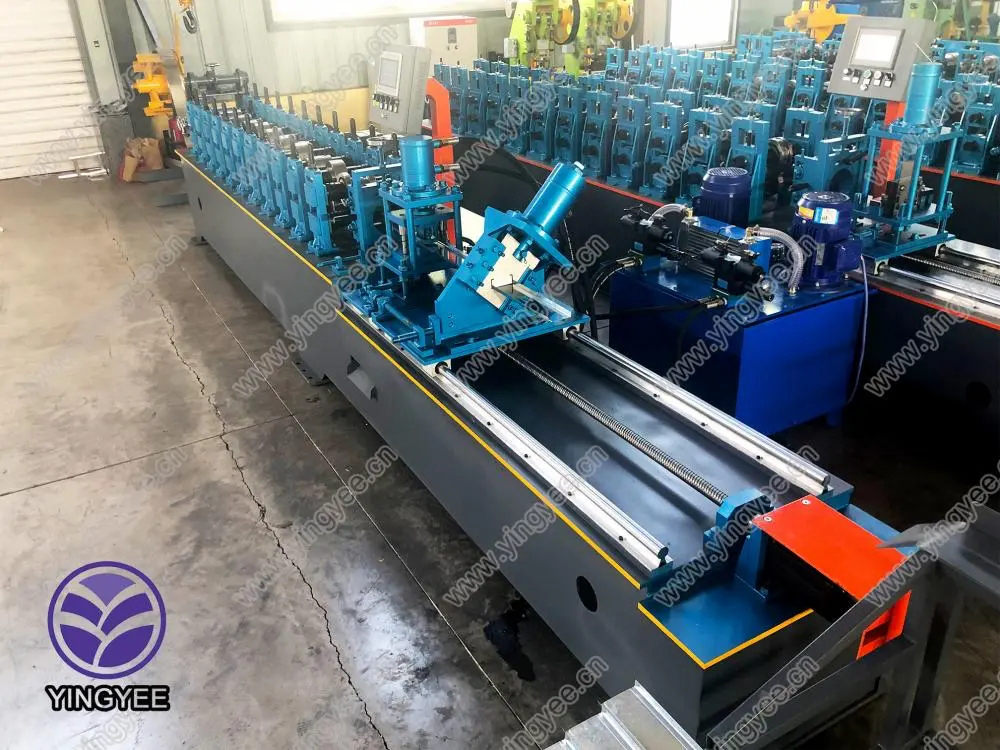
The Evolution of Roof Sheet Machines Focus on Glazed Sheet Forming Technology
In the contemporary construction landscape, the demand for durable, aesthetically pleasing roofing materials has prompted significant advancements in manufacturing technologies. One of the most notable innovations in this field is the roof sheet machine, particularly the glazed sheet forming machine. This equipment plays a critical role in the production of glazed sheets, which are increasingly popular due to their attractive appearance and functional benefits.
Understanding Glazed Sheet Forming Machines
Glazed sheet forming machines are specialized pieces of equipment designed to produce roofing sheets with a glossy, high-quality finish. These machines utilize advanced forming techniques to shape metal sheets at specific angles and profiles, ensuring optimal structural integrity and performance. The glazing process not only enhances the aesthetic appeal of the sheets but also provides additional protection against environmental factors such as UV radiation, moisture, and corrosion.
Typically, these machines are equipped with cutting-edge technology, including automatic feeding systems, precise control mechanisms, and high-speed rollers. This level of automation increases efficiency and minimizes waste during production while maintaining high standards of quality.
Advantages of Using Glazed Sheets
The popularity of glazed roofing sheets can be attributed to several key advantages. Firstly, they offer superior durability and longevity compared to traditional roofing materials, making them an economical choice in the long run. The coating applied during the glazing process enhances resistance to rust, scratches, and fading, ensuring that the roofing maintains its appearance and functionality for years to come.
Secondly, glazed sheets are lightweight, which eases the burden on structural supports and allows for easier installation. This characteristic is particularly beneficial for residential and commercial buildings where reducing overall weight can lead to cost savings in structural design and materials.

Additionally, glazed sheets are available in a wide range of colors and finishes, allowing architects and homeowners the flexibility to achieve their desired aesthetic. Whether it’s a vibrant color or a subtle texture, the customization options enable a high degree of personalization, appealing to a broad spectrum of tastes and preferences.
The Role of Technology in Production
The technological advancements in glazed sheet forming machines play a vital role in enhancing productivity and quality. Innovations such as computer numerical control (CNC) and automated quality inspection systems have streamlined operations, enabling manufacturers to produce sheets at an unprecedented scale and precision.
Moreover, integration with smart manufacturing solutions, including data analytics and IoT (Internet of Things), allows operators to monitor equipment performance in real-time. This capability helps in predictive maintenance, reducing downtime and extending the lifespan of the machines.
Environmental Considerations
With the growing emphasis on sustainability, the production of glazed sheets has also evolved to incorporate eco-friendly practices. Many manufacturers now use recycled materials in their roofing products, and energy-efficient processes are employed during the manufacturing stages. This commitment to sustainability not only appeals to environmentally conscious consumers but also aligns with global efforts to reduce carbon footprints in the construction industry.
Conclusion
In conclusion, the glazed sheet forming machine represents a significant advancement in roofing technology, combining aesthetic appeal with functional benefits. As the construction industry continues to evolve, these machines are poised to play a pivotal role in meeting the increasing demand for high-quality roofing solutions. With ongoing innovations, manufacturers can expect to enhance productivity, quality, and sustainability in their operations, ultimately contributing to a more robust and eco-friendly future in architecture and construction.